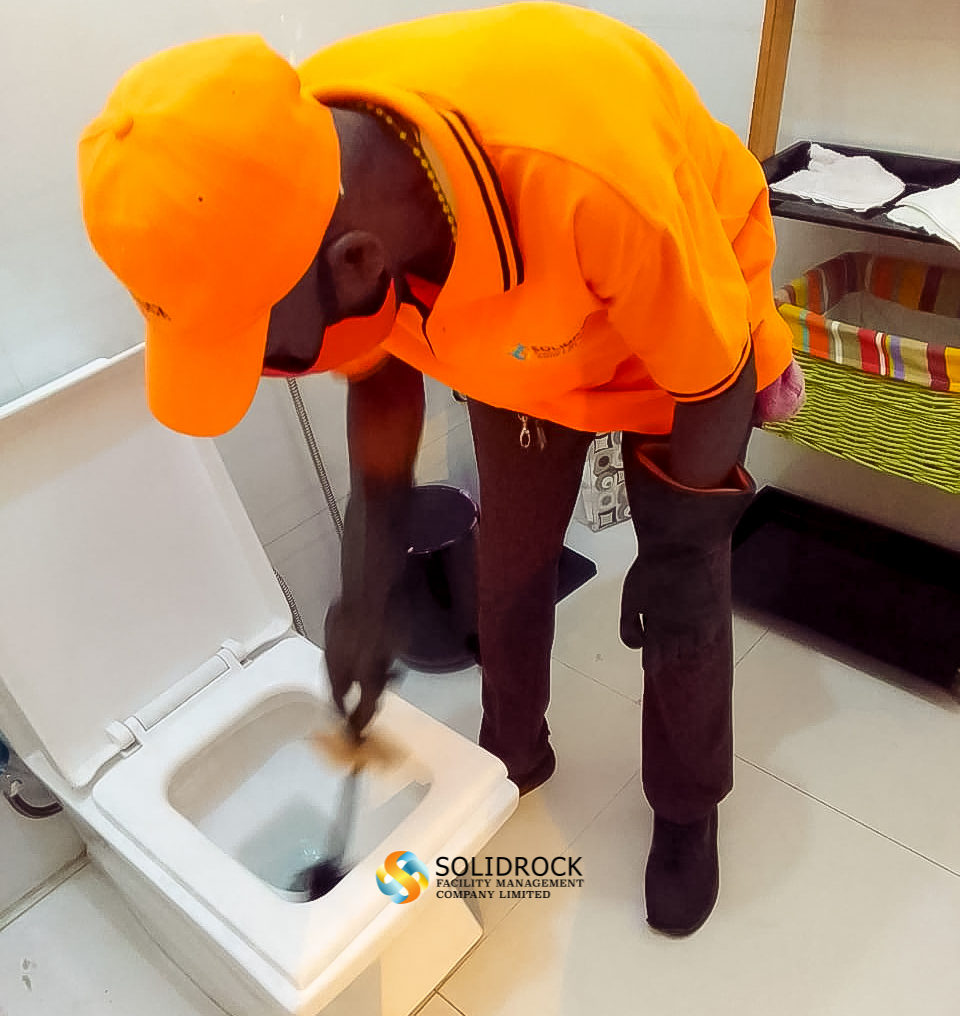Toilet hygiene is crucial to maintaining a clean and healthy environment, whether at home or using public restrooms. Good toilet hygiene can help prevent the spread of disease-causing germs and bacteria, reducing the risk of illness and infection..
Facility and Risk Management Tips
Facility and Risk Management Tips presented by www.solidrockfacilitymanagers.com
The Importance of Clean Restrooms
Restroom hygiene statistics highlight the presence of numerous bacteria on common surfaces, the link between poor sanitation and disease, and the importance of proper handwashing. Key figures include sink and faucet handles with 10,000 to 50,000 bacteria per square inch, and the reality that 57% of the world's population still lacks access to safely managed sanitation services.
Bacteria and contamination.
Sink and faucet handles: Can harbor 10,000 to 50,000 bacteria per square inch.
Bathroom floors: Have 2 million to 10 million bacteria per square inch.
Soap dispensers: Can contain over 1 million bacteria per square inch.
Flush handles: Have 1,000 to 10,000 bacteria per square inch.
Toilet seats: Contain 50 to 1,000 bacteria per square inch.
Common germs: Public restrooms can harbor germs like E. coli, Salmonella, and Staphylococcus Aureus, which can cause illnesses like diarrhea, norovirus, and respiratory infections.
Access to sanitation
Global access: In 2022, 57% of the global population used a safely managed sanitation service.
Lack of access: Over 1.5 billion people still lack basic sanitation, and 419 million people still defecate in the open.
Health impact: Without proper sanitation, deadly diseases spread rapidly. Diarrhea caused by poor sanitation kills over 750 children under five every day.
Impact on education: Globally, 1 in 3 schools lack adequate toilets, forcing many girls to miss school during their periods.
Hand hygiene and practices
Post-flush contamination: A single flush can release harmful germs up to 10 inches above the toilet seat.
Lack of awareness: While 85.3% of students were taught about hygiene, only 35.7% knew the need to wash their hands after defecation.
Cleaning habits: Some studies show that while most people flush, many do not close the toilet lid before flushing.
Additional Tips
In addition to following important toilet hygiene rules and having the right essential supplies, there are several other tips that can help maintain a clean and hygienic bathroom.
Always put the toilet lid down after use to prevent the spread of germs. Respect other members of the household by cleaning up after yourself, and avoid putting personal items on the floor to keep them germ-free. In public restrooms, limit contact with surfaces and quickly wipe down the toilet seat and bowl after use.
Regular cleaning and disinfecting of the toilet, sink, and shower can also help prevent the buildup of grime and bacteria, making it easier to maintain a clean and hygienic bathroom. By following these simple tips and being mindful of toilet hygiene, you can help prevent the spread of disease-causing germs and maintain a clean and healthy environment for everyone.
Importance of handwashing: Properly washing hands with soap and warm water is a crucial step in preventing the spread of germs.
We have all heard it before—wash your hands. But are you doing it right? The key is to be thorough. Here’s how to wash your hands properly:
Start by getting your hands wet with clean, running water.
Bring in the soap and lather up.
Make sure you are scrubbing everywhere—backs of hands, between fingers, under nails.
It’s like a mini massage that keeps you healthy, so why cut it short?
At Solid Rock, we are behind your business success www.solidrockfacilitymanagers.com




